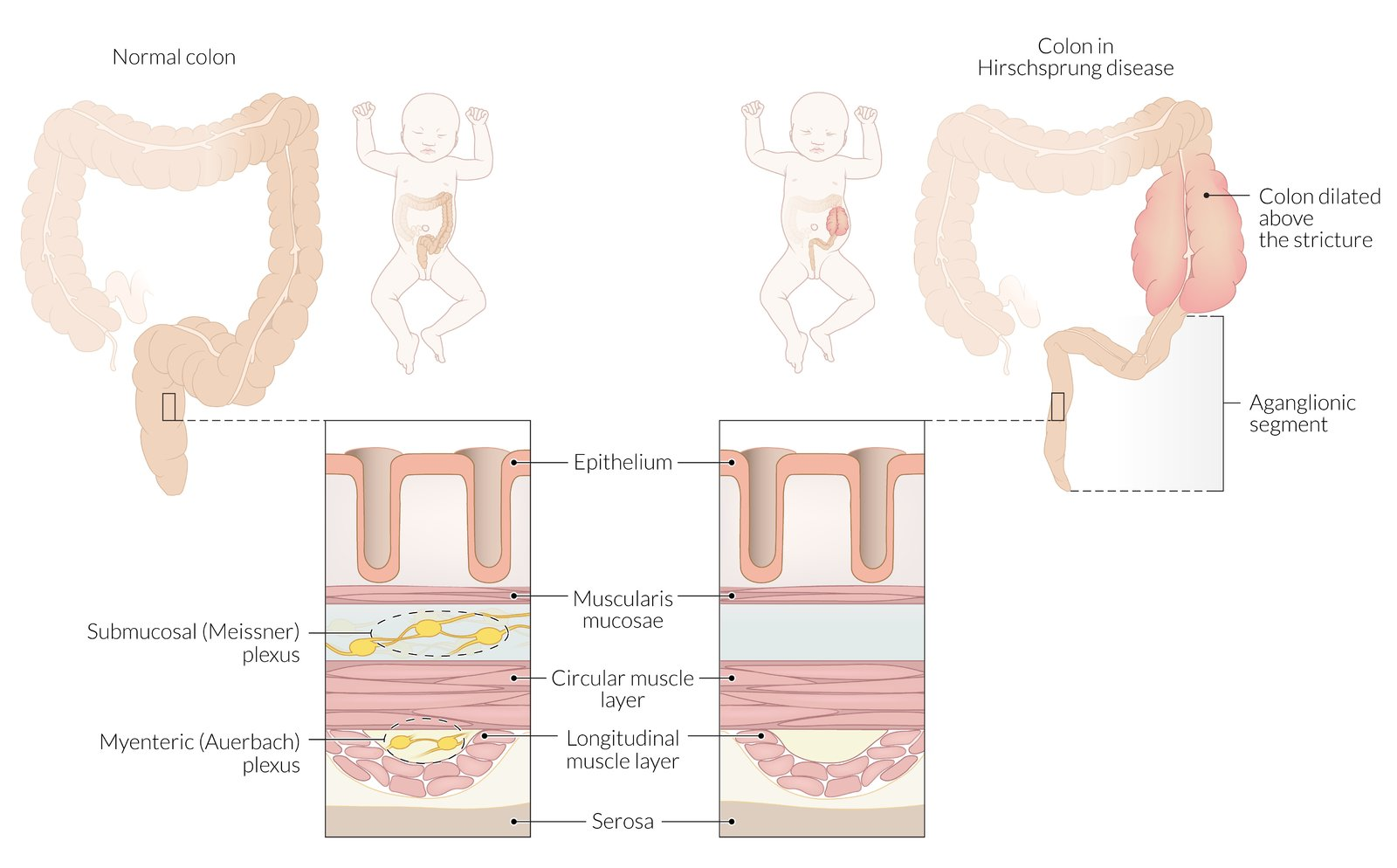Epidemiology
Etiology
- RET gene mutations associated with multiple endocrine neoplasia type 2 (MEN2) and familial Hirschsprung disease
Mnemonic
Hirschsprung disease always involves the REcTum and is often associated with RET mutations.
Pathophysiology
- Hirschsprung disease is caused by defective caudal migration of parasympathetic neuroblasts (precursors of ganglion cells) from the neural crest to the distal colon. This process takes place between the 4th and 7th week of development.
- Affected segments are histologically characterized by the absence of the Meissner plexus and Auerbach plexus (submucosal and myenteric plexus ganglion) beginning at the anorectal line, leading to:
- Inability of the myenteric plexus to control the intestinal wall muscles → uncoordinated peristalsis and slowed motility
- Spastic contraction of intestinal muscles → stenosis and functional obstruction
- Expansion of the colon segment proximal to the aganglionic section (possible megacolon)

Clinical features
- Delayed passage of meconium (> 48 hours)
- Distal intestinal obstruction: abdominal distention and bilious vomiting
- Digital rectal examination
- Tight anal sphincter
- Empty rectum
- Squirt sign: explosive release of stool and air upon removal of the finger
- Hirschsprung-Associated Enterocolitis (HAEC): The most severe and life-threatening complication, characterized by fever, explosive and foul-smelling diarrhea, and severe abdominal distention. HAEC can lead to sepsis and has a significant mortality rate.